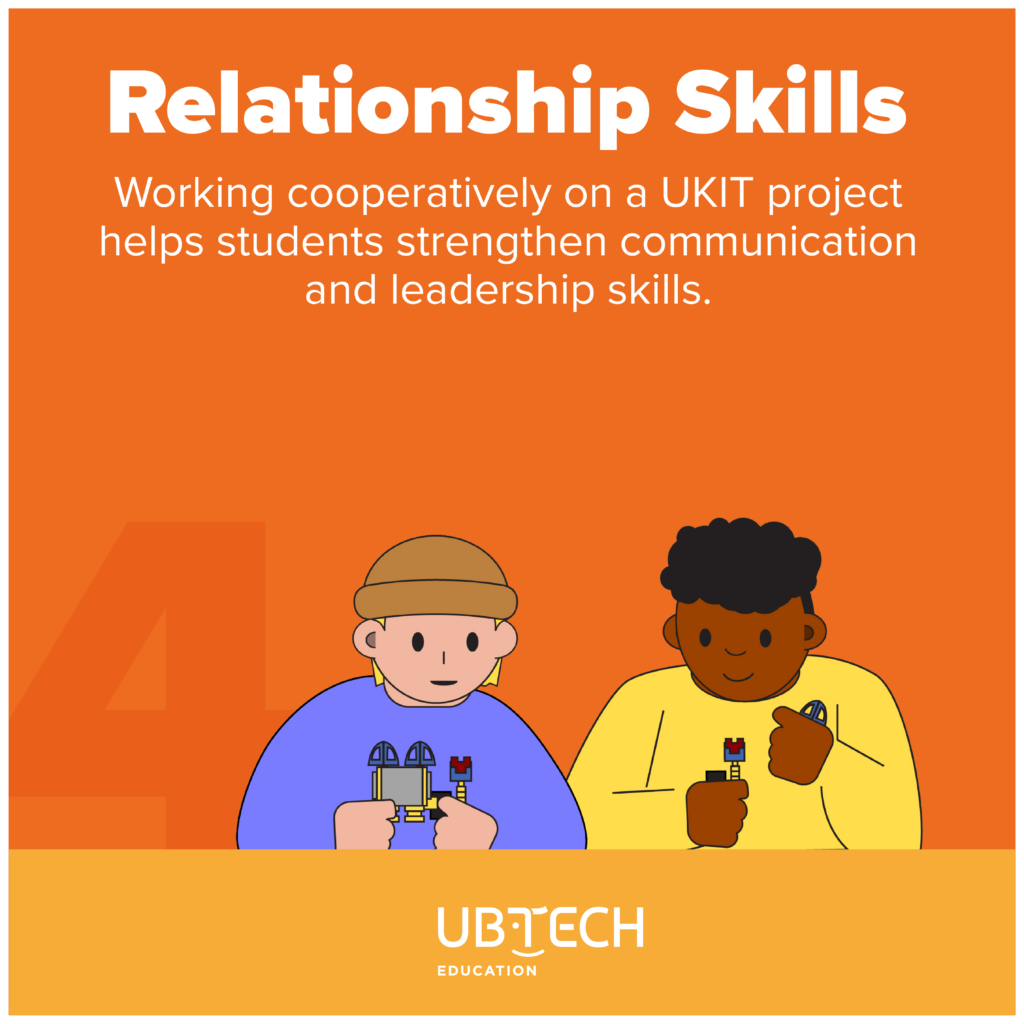How STEM Learning Reinforces Social-Emotional Learning
STEM education emphasizes the development of critical thinking, problem-solving, and innovation skills. In recent years, educators and researchers have increasingly recognized the importance and ease of integrating social-emotional learning (SEL) into STEM education through the hands-on nature of the projects.
Social-emotional learning is the process through which students develop skills to understand and manage emotions, establish and maintain positive relationships, and make responsible decisions. SEL is essential for students to thrive in school, in their careers, and in their personal lives as it helps students develop empathy, self-awareness, and resilience.
Let’s break down the five core social and emotional competencies of SEL as outlined by The Collaborative for Academic, Social, and Emotional Learning (CASEL) as they connect to STEM.
Self-Awareness

Working on STEM projects, especially open-ended design challenges with no clear solution, is a great way to help students become more self-aware as they work together to solve a problem. As students become frustrated or unsure about the task at hand, working in a collaborative group allows students the opportunity to talk through the problem, regulate their emotions, and work through the challenge as a team. Having open discussions and chances to reflect during or following an open-ended challenge will help your students recognize and talk through their emotions.
Self-Management

STEM reinforces social-emotional learning by providing opportunities for students to develop self-management skills. While working on STEM activities, students often face setbacks and challenges that require them to persevere through difficult times. These experiences help students to develop resilience, self-confidence, and a growth mindset. By learning to manage their emotions and remain focused on their goals, students develop the self-regulation skills that are essential for success in any field.
Social-Awareness

When students work together on STEM challenges, they are offering support to their teammates by asking/answering questions, sharing ideas, listening, and making compromises. Through these interactions, students can learn to understand what their teammates are feeling and learn to put themselves in their shoes. Learning to empathize with others as well as relate to them helps students build social-awareness skills.
Relationship Skills

Another way that STEM reinforces social-emotional learning is by providing opportunities for students to work collaboratively. Collaboration is an essential component of SEL because it helps students learn to communicate effectively, build relationships, and work towards a common goal. When students work on STEM projects, they must work together to solve complex problems. This collaborative work encourages students to listen to each other’s perspectives, share their own ideas, and work together to find solutions.
Responsible Decision-Making

Finally, STEM education reinforces social-emotional learning by providing students with opportunities to engage in meaningful and purposeful work. When students work on STEM projects, they know that their work has real-world applications and can make a difference in people’s lives. This sense of purpose helps students to develop a sense of empathy and social responsibility, which results in responsible decision-making.
In conclusion, hands-on STEM activities are necessary for today’s classrooms because they provide students with real-world problems to solve, encourage collaboration, and foster innovation. By integrating SEL into STEM education, educators can help students develop the skills and competencies that are essential for success in today’s society both in and outside of the classroom.
Foster SEL in the classroom with UBTECH Education’s innovative STEM solutions.